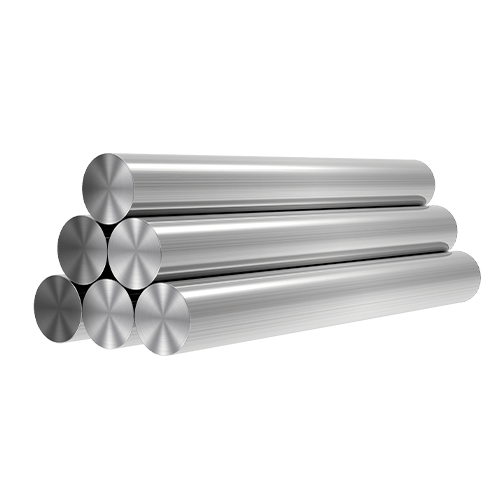Introduction

In the realm of materials engineering, 316 stainless steel bar stock stands out as a versatile and widely used option. Renowned for its corrosion resistance, durability, and strength, it finds applications across various industries, from construction to manufacturing. This blog delves into the properties, applications, and advantages of 316 stainless steel bar stock, highlighting its significance in modern engineering.
Properties of 316 Stainless Steel Bar Stock
316 stainless steel, also known as marine-grade stainless steel, exhibits exceptional properties that make it highly desirable for a multitude of applications. Below are some key characteristics:
| Property | Description |
|---|---|
| Corrosion Resistance | Offers excellent resistance to corrosion, especially in marine and chemical environments. |
| Strength | Possesses high tensile strength and toughness, making it suitable for structural applications. |
| Heat Resistance | Maintains its integrity at elevated temperatures, making it ideal for high-temperature environments. |
| Formability | Exhibits good formability and weldability, allowing for ease of fabrication. |
| Hygiene | Resistant to staining and bacterial growth, making it suitable for food and medical applications. |
Applications of 316 Stainless Steel Bar Stock
The versatility of 316 stainless steel bar stock lends itself to a wide array of applications:
- Construction: Used in structural components, handrails, and architectural elements due to its strength and aesthetic appeal.
- Marine Industry: Essential for marine hardware, boat fittings, and offshore structures due to its corrosion resistance in saltwater environments.
- Chemical Processing: Utilized in pumps, valves, and storage tanks due to its resistance to corrosive chemicals.
- Medical Equipment: Employed in surgical instruments, medical implants, and pharmaceutical equipment due to its biocompatibility and hygiene properties.
- Food Processing: Ideal for food processing equipment, brewing tanks, and kitchen utensils due to its resistance to corrosion and staining.
Advantages of 316 Stainless Steel Bar Stock
The utilization of 316 stainless steel bar stock offers several advantages:
- Corrosion Resistance: Provides long-term durability in harsh environments, reducing maintenance costs.
- Strength and Durability: Ensures structural integrity and longevity of components, even under high loads.
- Hygienic Properties: Maintains cleanliness and prevents bacterial growth, crucial for industries with strict hygiene standards.
- Aesthetic Appeal: Possesses a smooth, polished finish, enhancing the visual appeal of architectural and decorative applications.
- Wide Availability: Readily available in various shapes and sizes, facilitating easy procurement and fabrication.
Applications in Various Industries
316 stainless steel bar stock finds extensive use in diverse industries:

| Industry | Applications |
|---|---|
| Construction | Structural components, handrails, facades |
| Marine | Boat fittings, offshore structures |
| Chemical Processing | Pumps, valves, storage tanks |
| Medical | Surgical instruments, medical implants |
| Food Processing | Brewing tanks, kitchen utensils |
Conclusion
In conclusion, 316 stainless steel bar stock stands as a versatile and indispensable material in modern engineering and manufacturing. Its exceptional properties, including corrosion resistance, strength, and hygiene, make it a preferred choice across various industries. From structural components to medical implants, its applications are vast and varied, contributing significantly to advancements in technology and infrastructure.
FAQ
Q: What distinguishes 316 stainless steel from other stainless steel grades?
A: 316 stainless steel contains molybdenum, which enhances its corrosion resistance, particularly in chloride environments such as seawater.
Q: Is 316 stainless steel suitable for high-temperature applications?
A: Yes, 316 stainless steel maintains its integrity at elevated temperatures, making it suitable for use in heat exchangers, exhaust systems, and furnace parts.
Q: Can 316 stainless steel be welded?
A: Yes, 316 stainless steel is readily weldable using common welding techniques, such as TIG or MIG welding.
Q: How does 316 stainless steel compare to 304 stainless steel?
A: While both are austenitic stainless steels, 316 stainless steel offers superior corrosion resistance, particularly in harsh environments containing chlorides.
Q: What precautions should be taken when machining 316 stainless steel?
A: Proper lubrication and cooling are essential to prevent work hardening and ensure smooth machining operations. Additionally, using sharp tools and maintaining appropriate cutting speeds and feeds can optimize machining efficiency.
By addressing these frequently asked questions, we hope to provide clarity on the properties and applications of 316 stainless steel bar stock. If you have further inquiries or require assistance with your specific project needs, feel free to reach out to us.
With its myriad benefits and applications, 316 stainless steel bar stock continues to play a pivotal role in shaping our modern world, offering strength, durability, and reliability across diverse industries.
